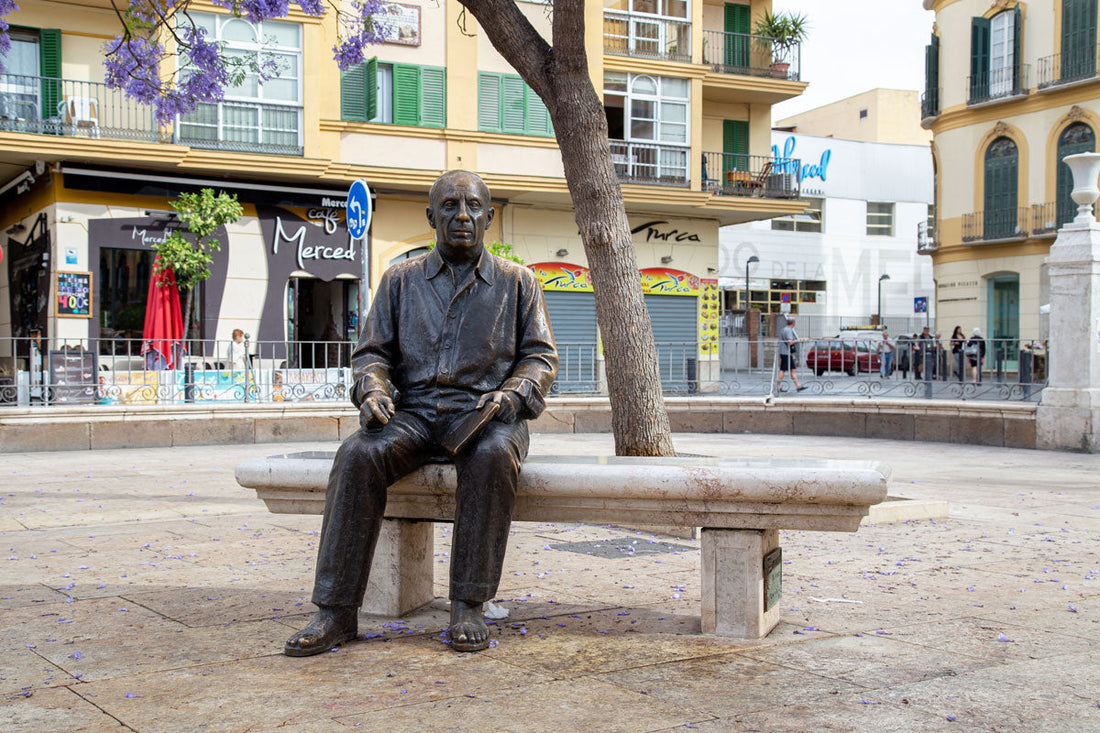
Picasso’s Artistic Transformation: The Profound Influence of Baga Art and African Masks
Share
Pablo Picasso, one of the most influential artists of the 20th century, is often celebrated for his role in pioneering Cubism and redefining modern art. However, fewer people are aware of the profound impact African art, particularly the Baga people of Guinea, had on his creative evolution. Picasso’s encounter with African masks and sculptures in the early 1900s marked a turning point in his career, leading to a radical shift in his artistic style. This blog explores how Picasso was inspired by African art, with a focus on the Baga mask and its role in shaping his groundbreaking works.
Picasso Inspired by African Art: A Transformative Encounter
In the early 20th century, Paris was a melting pot of cultural exchange, and African art began to captivate European artists and collectors. Picasso’s fascination with African art is often traced back to his visit to the Musée d'Ethnographie du Trocadéro in 1907. There, he encountered a collection of African masks and sculptures, including those from the Baga people of Guinea, West Africa. These artifacts, with their abstract forms and spiritual resonance, left an indelible mark on Picasso’s imagination.
Picasso later recalled, “The masks weren’t just sculptures; they were magical objects… They were against everything—against unknown, threatening spirits. I understood what African art meant to me.” This revelation coincided with his work on Les Demoiselles d’Avignon (1907), a painting that is widely regarded as the birth of Cubism. The angular, fragmented faces of the figures in the painting bear a striking resemblance to African masks, signaling Picasso’s departure from traditional European aesthetics.

The Baga Mask: A Source of Inspiration
Among the African artifacts that captivated Picasso, the Baga mask held a special significance. The Baga people, an ethnic group from Guinea, are renowned for their intricate wooden sculptures and masks, which are used in rituals and ceremonies. The Baga Nimba mask, in particular, is a masterpiece of African art. Characterized by its large, curved headdress and abstract facial features, the Nimba mask represents the spirit of fertility and harvest.
Picasso was drawn to the Baga mask’s bold, geometric forms and its ability to convey emotion and meaning through abstraction. The mask’s exaggerated features—such as the elongated nose—resonate in Picasso’s later works, where he deconstructed and reassembled human forms in innovative ways. The Baga mask’s influence is evident in Picasso’s use of simplified, yet powerful, shapes to express complex ideas.
Picasso and African Masks: A New Visual Language
Picasso’s engagement with African masks, including those of the Baga people, was not merely an act of appropriation but a profound dialogue. He sought to understand the spiritual and cultural significance of these objects, integrating their aesthetic principles into his own work. African masks provided Picasso with a new visual language—one that prioritized abstraction, symbolism, and emotional depth over realism.
This influence is particularly evident in Picasso’s portraits from the early 20th century. For example, his Bust of a Man (1908) and Head of a Woman (Fernande) (1909) showcase the artist’s experimentation with mask-like faces and geometric forms. These works reflect Picasso’s ability to synthesize African artistic traditions with his own innovative vision, creating a style that was entirely unique.
Picasso and Africa: A Legacy of Cross-Cultural Exchange
Picasso’s engagement with African art underscores the importance of cross-cultural exchange in the development of modern art. While critics have debated the ethics of Picasso’s use of African motifs, it is undeniable that his work helped to elevate African art to a global stage. By drawing inspiration from the Baga mask and other African artifacts, Picasso challenged the Eurocentric norms of his time and opened the door for a more inclusive understanding of art.
Today, the influence of African art on Picasso’s work is widely acknowledged, and the Baga mask remains a symbol of this transformative encounter. Museums and galleries around the world continue to celebrate the connection between Picasso and African art, highlighting the enduring legacy of this cross-cultural dialogue.
Conclusion: Picasso’s Enduring Connection to Baga Art
Picasso’s artistic journey was shaped by his encounter with African art, particularly the Baga mask. This connection not only revolutionized his own work but also redefined the trajectory of modern art. By embracing the abstract forms and spiritual depth of African masks, Picasso created a visual language that continues to inspire artists today.
The story of Picasso and African masks is a testament to the power of cultural exchange and the universal language of art. As we reflect on Picasso’s legacy, we are reminded of the importance of looking beyond our own traditions to find inspiration in the rich tapestry of global cultures.


